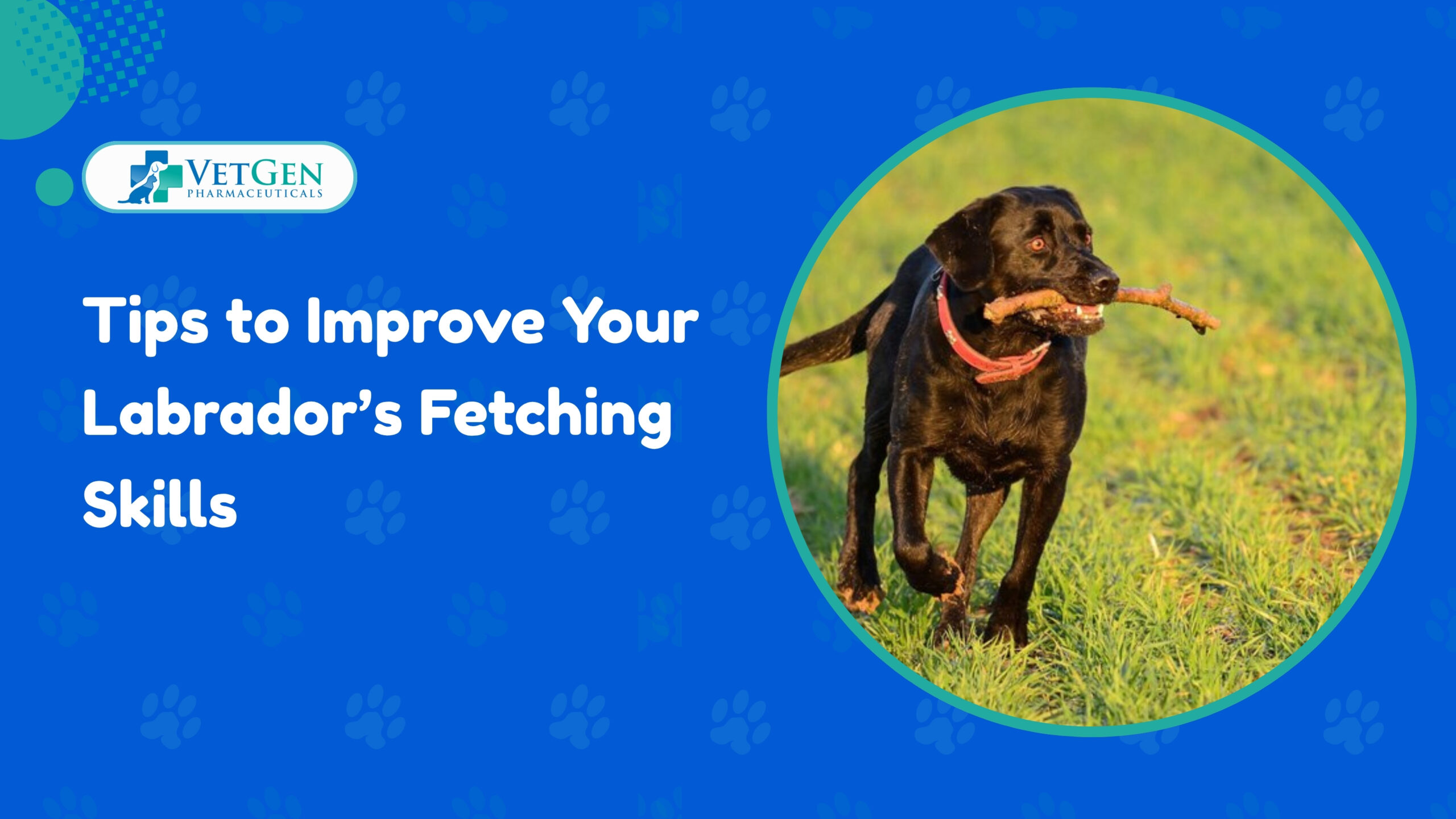There’s no denying it, Labradors are born with great fetching skills. It’s practically in their DNA to chase, grab, and bring things back with enthusiasm. But if you’ve ever tossed a ball expecting your Lab to sprint after it and proudly return it, only to be met with a blank stare or a game of “keep away,” you’re not alone. While many Labs do have a natural affinity for fetch, not all of them are pros at the game right out of the gate. That’s where a little guidance and patience come into play.
Teaching your Labrador to fetch properly and improving their skills if they already know the basics can be a fun and rewarding experience for both of you. Whether your dog is still a puppy or already a full-grown adult, there’s always room for improvement.
In this blog, we’ll walk you through practical, effective tips to take your Labrador’s fetching game from “meh” to master-level.
Start With the Right Toys
Fetch toys are different. If your Labrador isn’t showing much interest in fetching, the problem might be the toy. Dogs have preferences, just like people do. Some love squeaky toys, others prefer tennis balls, and a few may only go wild for a floppy stuffed animal.
Choose a toy that’s safe, easy to throw, and appealing to your Lab. If your dog is food-motivated, try using a fetch toy that dispenses treats. If they like water, consider floating fetch toys for the pool or lake. Once you find a toy your Lab gets excited about, half the battle is won.
Make Fetch a Game Worth Playing
A big mistake many dog owners make is thinking that fetch should come naturally and that if a dog isn’t into it, they’re just lazy or uninterested. The truth is, fetch needs to be taught, and more importantly, it needs to be fun.
Start by getting your Lab excited about the toy. Wiggle it around, toss it a short distance, and encourage them to grab it. Use an enthusiastic voice, and celebrate when they engage. If your dog grabs the toy but doesn’t bring it back, don’t scold them, reward any progress, and build from there.
Gradually increase the distance of the throw, and keep your tone upbeat. Praise and rewards (treats, pats, or verbal “good boy/girl!”) go a long way in reinforcing the behavior you want.
Teach the “Drop It” Command
One of the biggest obstacles in fetch training is the return part. Labradors may run after the toy with full energy, grab it, and then run off to chew it in a corner. This is where the “drop it” command comes into play.
Teaching your Lab to release the toy on command ensures that fetch doesn’t turn into a frustrating tug-of-war. Start by offering a trade: when your dog brings the toy back, offer a treat and say “drop it.” Once they release the toy, give them the treat and plenty of praise.
With consistency, your Lab will associate the “drop it” command with good things. Eventually, they’ll be more than happy to hand over the toy so the game can continue.
Use a Long Leash for Training Sessions
If your Lab tends to run off with the toy or ignore you when you call them back, try using a long leash during training. A 20-30 foot training lead gives your dog freedom to move while still keeping you in control.
Toss the toy a short distance, let your Lab run after it, and use the leash to gently guide them back to you if needed. This prevents the habit of running away and reinforces the idea that fetch is a game played together.
With repetition, you’ll find your dog starts returning on their own, and you can eventually phase out the leash.
Keep Sessions Short and Sweet
Dogs, even high-energy ones like Labradors, can get mentally fatigued with long or repetitive training sessions. If you want to keep your Lab engaged, keep fetch sessions short, especially in the beginning. Ten to fifteen minutes is usually plenty.
End the game while your dog is still excited, not bored or overworked. That way, they’ll associate fetch with fun and be eager to play again later. Also, try to practice at different times of the day and in various settings: backyard, park, beach, indoors so your Lab learns to focus regardless of location or distractions.
Use Fetch to Burn Energy and Reinforce Training
Once your Lab gets the hang of fetch, it becomes an amazing tool for more than just fun. Fetch is a great way to:
- Burn off excess energy
- Reinforce obedience commands like “sit,” “stay,” and “come”
- Improve impulse control and focus
- Deepen the bond between you and your dog
Try incorporating basic commands into your fetch routine. Ask your Lab to “sit” before you throw the toy, or to “stay” until released. This turns fetch into a more structured activity that challenges your dog mentally as well as physically.
Reward Progress, Not Perfection
Every dog learns at their own pace. Some Labradors will “get it” within a few days, while others may take weeks to fully grasp the fetch sequence. That’s completely normal.
Celebrate small wins. If your dog used to ignore the toy and now at least chases it, that’s progress. If they used to run away but now bring it halfway back, that’s another step forward. Stay consistent, stay positive, and avoid punishment, it only confuses the dog and dampens their enthusiasm. Remember, training should always be a bonding experience, not a battle.
Conclusion
Improving your Labrador’s fetching skills isn’t just about getting them to chase a ball, it’s about building communication, trust, and fun into your daily routine. With the right approach, a little patience, and a lot of praise, you can turn your Labrador into a fetch superstar.
If you ever need more tips on caring for your dog, from training to health and wellness, don’t forget to visit VetGen Pharmaceuticals. Whether you’re raising a new puppy or caring for a senior companion, we’ve got the information you need to keep your furry friend happy, healthy, and thriving.
Frequently Asked Questions
What should I do if my Labrador won’t bring the ball back?
If your Lab runs off with the ball or doesn’t return it, try teaching the “come” and “drop it” commands separately using treats and praise. Use a long training leash if needed, and always reward them when they bring the toy closer, even if it’s not perfect at first.
How long does it take to teach a Labrador to fetch properly?
It varies by dog, but most Labradors pick up the basics within a few days to a couple of weeks with consistent, short training sessions. Stay positive and patient, progress builds over time with regular practice.
Can older Labradors learn to fetch, or is it just for puppies?
Absolutely! Older Labs can still learn and enjoy fetch, though you may need to go slower and adjust the intensity. Use softer toys, shorter throws, and plenty of praise to make it fun and comfortable for them.






